Despite the odd sign of the 21st Century like plastic water containers, the Omo Valley in Southern Ethiopia is largely as it has been for generations. Its UNESCO World Heritage Site Status awarded in 1980 is fully deserved because the diversity of the Valley has few equals anywhere in the World. That diversity comes from the number of different tribes within the Valley, each of which closely guards its traditions and originality. There is a threat to the Valley because of the sale of land to foreign companies intent on producing biofuels and cash crops with the construction of a dam now completed and plans for resettlement are in place. These are the tribes that will be affected by change.
Mursi
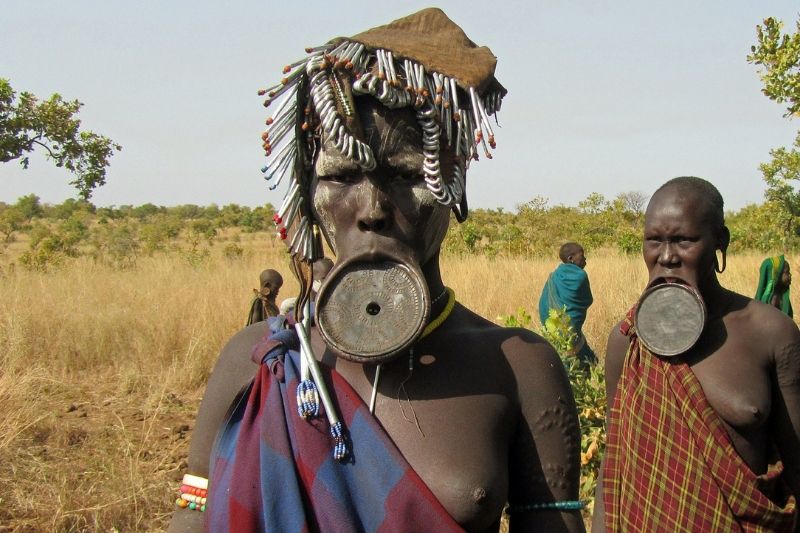
The Mursi women who wear big clay plates in their bottom lips have attracted tourists in search of unique photographs. The Tribe is unhappy that it is becoming a tourist attraction for this very reason and although there is a high price to pay for such shots, the money tends to be pocketed by travel agents, not the Tribe itself. Children fare better, painted in colorful clay and seeking money for photographs.
These tourist visit hide the essence of the Mursi whose livelihood is livestock, cows which wander throughout the region seeking the best pasture. Another sign of the 21st Century; the herdsmen carry Kalashnikovs as protection from thieves and wild animals after their cattle.
Ari
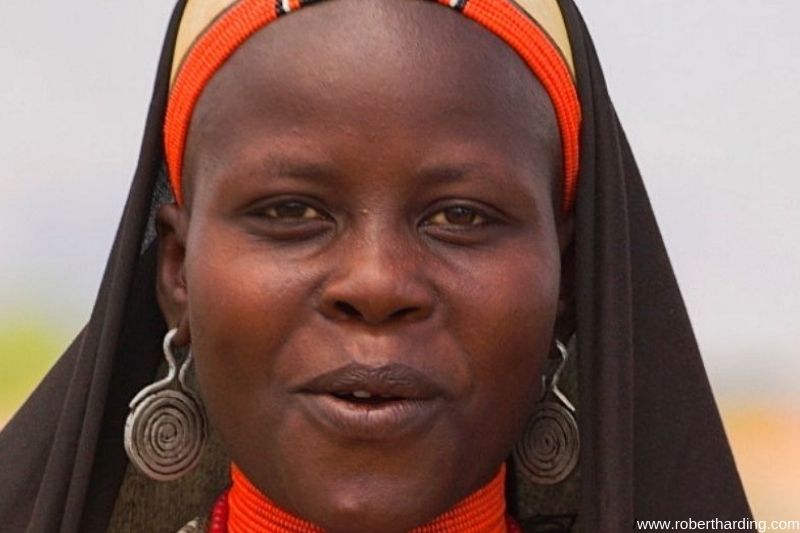
The largest tribe in the Omo Valley is the Ari tribe which numbers around 200,000. They grow a series of different crops with grains, fruit and coffee among them as well as gathering honey. The Ari people of Omo Valley do keep herds of livestock as well while the women are famous for their distinctive pottery. Every woman has her own style of painting and generally wears a skirt made from the banana leaf. Their personal designs and the colors seen on their houses are produced by using their fingers or alternatively sticks and feathers with the colors coming by the use of charcoal, ash, earth and cow dung.
Konso

The Konso live in a barren and isolated area with the Valley’s hills. Villages have stone walls for defensive reasons with a central communal hut reached after walking through a main gate and a number of alleyways. They need to fertilize the poor ground which they do with cow dung to help produce their main crop, sorghum for both flour and beer. Other crops include grain, coffee, beans and cotton.
Konso tradition includes constructing a generation pole every 18 years so it is easy to tell the age of a village. Large carvings mark the graves of notable members with smaller ones for his wives and his defeated enemies.
Hamer
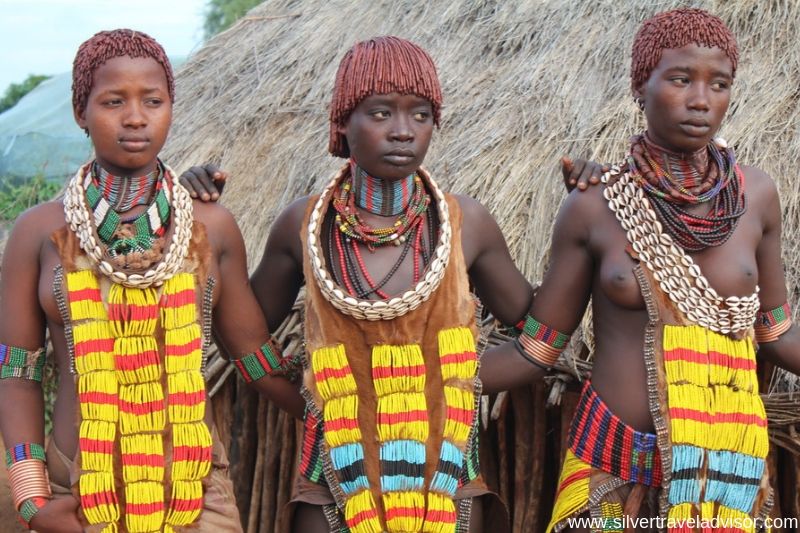
It is the tribal rituals of the Hamer which make the tribe stand out from the others in the Omo Valley. The Hamer occupies the eastern side of that Valley and visitors will be delighted to observe the cattle-leaping ceremony that every man goes through before reaching adulthood. Not as pleasant is the whipping ceremony that women endure to prove their love for their kinsmen.
Numbering around 20,000, the Hamer are herdsmen of cattle and goat, a sign of wealth, and the women farm sorghum, maize and beans. At one time, the Hamer hunted local game but that has now virtually disappeared. Ploughing was done with sticks until recently with the people moving around communal land once it is exhausted.
Banaa
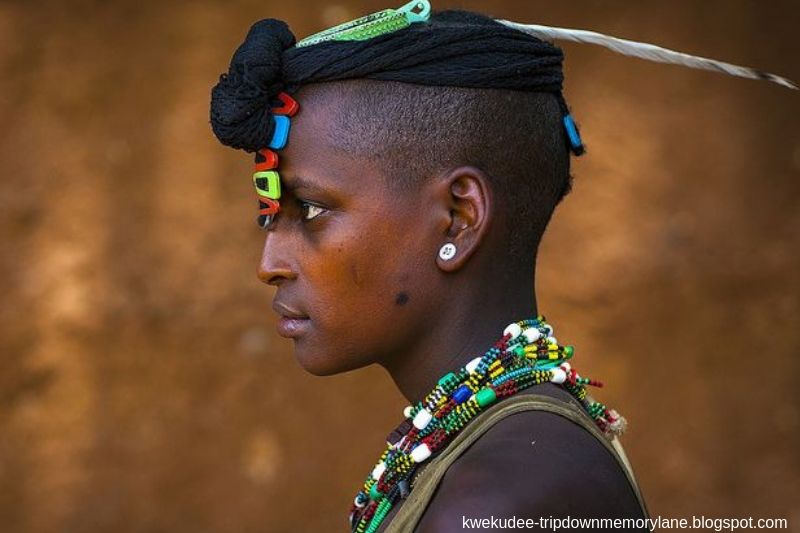
The Banaa, numbering around 50,000 live in the South East Highlands and are regarded as a peace-loving and friendly people. The tribe is thought to be closely related to the Hamer and these days the men are noted for their clay caps decorated with feathers with both men and women wearing long garments. Both use white chalk to paint themselves with the women wearing beads.
Semi-nomadic, the tribe keeps cattle, goats and sheep, moving around in search of water with cattle the deciding factor in arranging a marriage. The Baana has taken to agriculture as well in recent years and honey has become an important part of life with trading in local markets to buy coffee and salt.
Dorze

The Dorze men were formerly warriors living north of Addis Ababa but today the Tribe is known for cultivation which stops the erosion of the hillsides. Crops include cereals, fruits, vegetables, spices and tobacco grown with a large village compound. The women look after the children, cooking, cleaning and spinning cotton while the men farm and build their two storey, beehive-shaped huts which have been known to last 80 years. If termites attack, their construction allows for picking the hut up and moving on. Both sexes wear long colorful robes known as shammas.
Karo
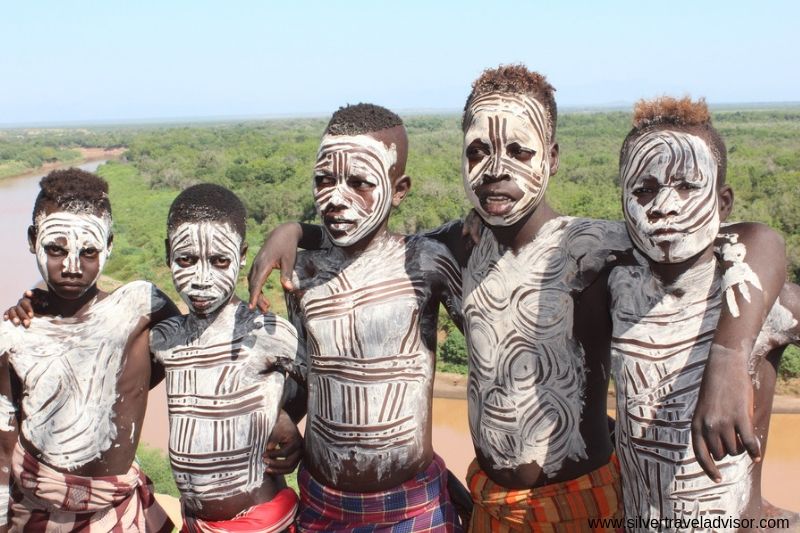
With only about 2,000 members, the Karo represents the smallest of the tribes in the Omo Valley, and likely the smallest tribe on the Continent of Africa. Sleeping sickness struck at the end of the 19th Century and the Tribe has never really recovered. The fertile strips on the banks of the Omo River is where the Karo grows its crops of beans, sorghum and maize with the diet supplemented by fishing. Cattle and goats are also a factor of daily life. The Karo makes great efforts to keep their heritage pure and resists intermarriage with other tribes even though there is the belief that the Hamer is closely related.
Body and face painting evidence of artistic skills with colors found in chalk, yellow rock, iron ore as well as charcoal. Women cut and scar themselves in the belief it enhances their beauty further. Young males become men after bull jumping over rows of cattle, but they still cannot marry if an older brother is still unmarried.
The natural environment, fauna and ethnic tribes all face pressures in the modern-day world. That certainly applies to the tribes of the Omo Valley. It is to be hoped that these wonderful tribes continue to live as their ancestors did.










